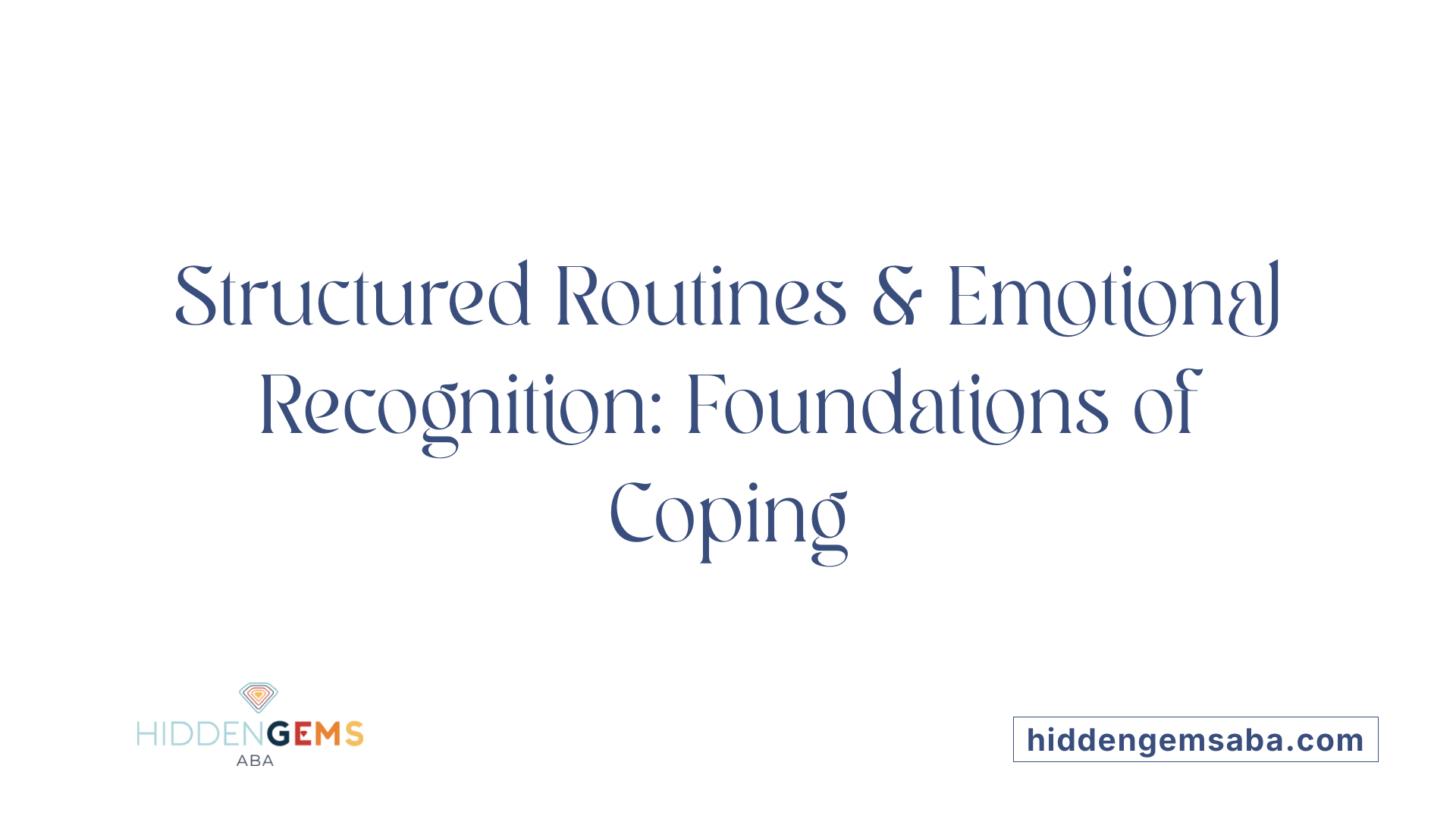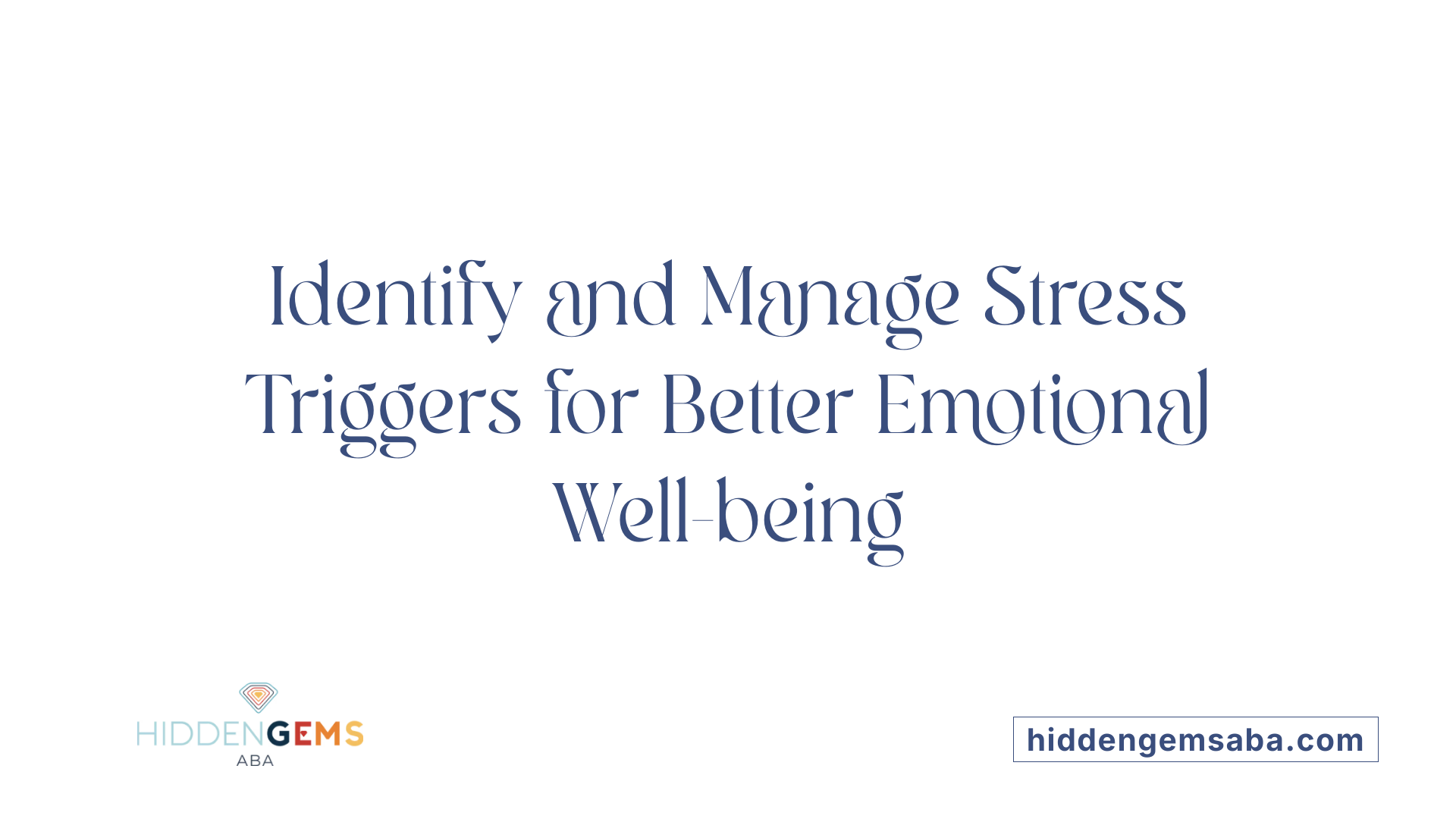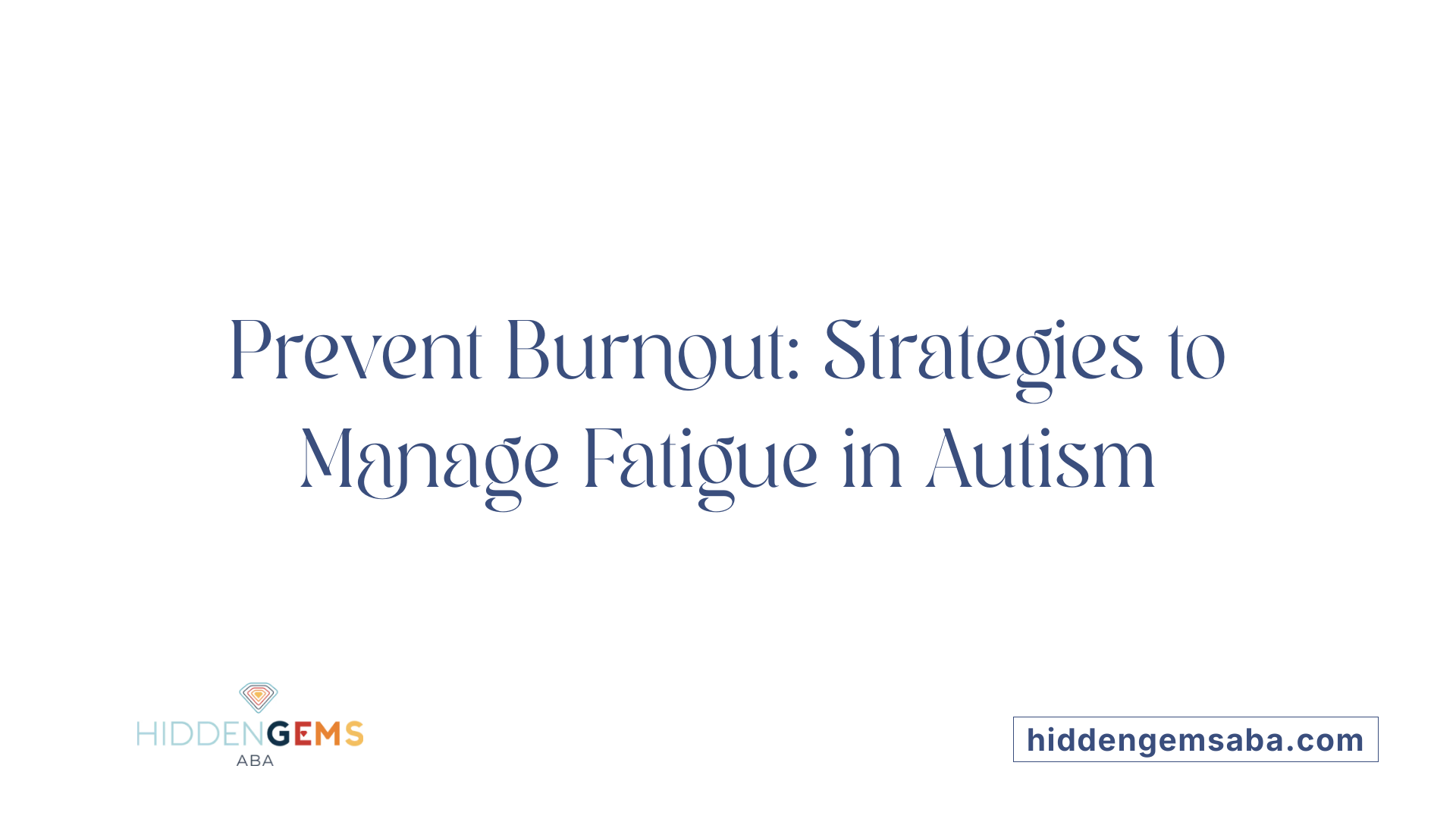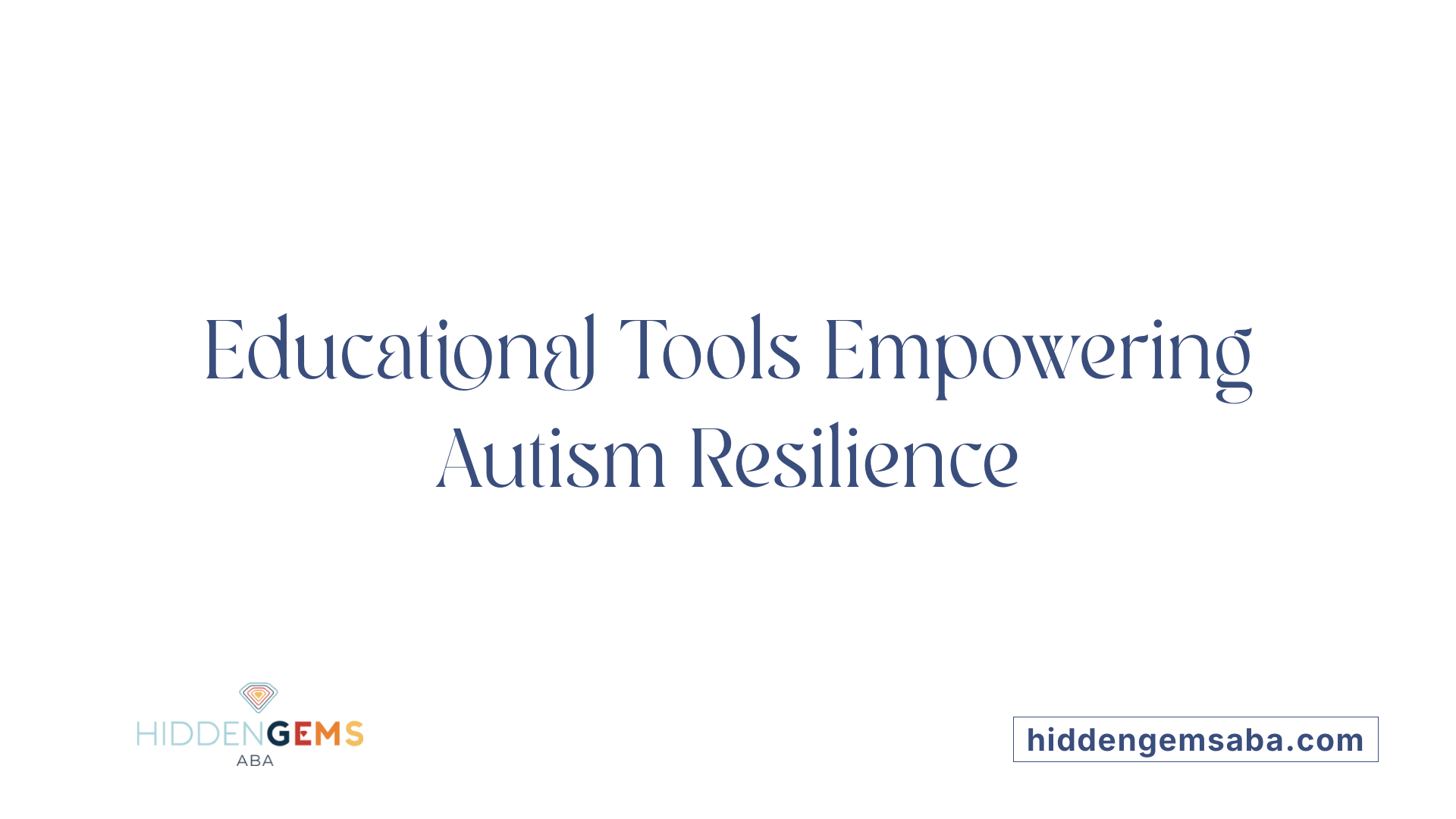Understanding and Supporting Coping Skills in Autism
Developing effective coping skills is essential for enhancing the emotional well-being, resilience, and overall quality of life for autistic individuals. Tailored strategies that recognize individual triggers and personal strengths can help manage stress and promote emotional regulation. This article explores comprehensive approaches for supporting autistic individuals across all ages, from children to adults, focusing on creating stable routines, emotional understanding, and effective support systems.
Foundations of Developing Coping Skills in Autism

What strategies can be effective for developing coping skills in individuals with autism?
Building effective coping skills in autistic individuals involves a combination of structured routines, emotional recognition, and tailored interventions. Establishing predictable daily routines and visual schedules helps create a sense of stability and reduces anxiety caused by uncertainty. Teaching relaxation techniques such as deep breathing, meditation, or sensory-based activities like using sensory toys can empower individuals to self-regulate during stressful moments.
Recognizing personal triggers is crucial. Common triggers include sensory overload, social interactions, and sudden routine changes. Supporting individuals to identify these triggers allows caregivers and professionals to implement specific strategies, such as social stories, visual supports, or sensory breaks, tailored to their needs.
Incorporating leisure activities and encouraging social inclusion through supported connections and communication methods bolster emotional resilience. For adults, engaging in hobbies like arts or music, and utilizing technology for socialization, can further promote emotional expression.
Supporting systems are vital; collaboration with healthcare professionals, including occupational and physical therapists, enhances the development of personalized coping strategies. Building self-acceptance and focusing on individual strengths foster confidence and mental well-being.
In summary, combining predictability, emotional awareness, tailored interventions, and professional guidance forms a comprehensive approach to strengthening coping skills among those with autism.
Recognizing and Managing Stress Triggers

What are common stressors such as sensory overload, social situations, and routine changes?
Individuals with autism often encounter specific challenges that can trigger stress or anxiety. Common stressors include sensory overload, where sights, sounds, or textures become overwhelming; social situations that may be difficult to navigate or interpret; routine changes that disrupt predictability; emotional overwhelm; and feeling misunderstood. Recognizing these stressors is essential for creating effective coping strategies.
Sensory overload might result from crowded spaces, loud noises, or bright lights. Social situations can involve communicating or understanding social cues, which may cause discomfort. Routine changes, such as a shift in daily activities or unexpected events, can heighten anxiety due to the importance of predictability for many autistic individuals.
How important is it to identify individual triggers?
Understanding each person's unique triggers allows caregivers, educators, and individuals themselves to develop personalized solutions. By pinpointing what specifically causes stress, tailored interventions can be implemented to minimize adverse reactions. This individualized approach ensures that coping mechanisms are relevant and effective, reducing the overall impact of stressors.
What tools like visual supports, social stories, and sensory tools can help in addressing triggers?
Visual supports, including charts or pictorial schedules, help clarify daily routines, making transitions smoother and reducing anxiety. Social stories provide context and explanations for social situations, aiding understanding and decreasing uncertainty. Sensory tools such as noise-canceling headphones, fidget toys, or sensory mats can help manage sensory overload.
Implementing these tools in everyday settings supports emotional regulation and creates a more predictable, calm environment. Consistent use of visual aids and sensory tools helps autistic individuals develop resilience and better manage their responses to stressors.
| Strategy | Purpose | Example |
|---|---|---|
| Visual Supports | Clarify routines and expectations | Visual schedules or emotion charts |
| Social Stories | Improve understanding of social cues and scenarios | Stories explaining going to the doctor |
| Sensory Tools | Minimize sensory overload and provide calming input | Fidget spinners, weighted blankets |
Recognizing and actively managing these triggers through personalized, accessible strategies can significantly improve emotional well-being and resilience in autistic individuals.
Techniques to Cultivate Emotional Regulation
How can support be provided to autistic individuals during challenging or uncertain situations?
Supporting autistic individuals through stressful or unpredictable circumstances involves a tailored approach that centers on predictability and emotional safety. Visual aids such as social stories and emotion cards are instrumental in helping them understand what to expect and recognize their feelings.
Using visual schedules allows for clear, step-by-step guidance, reducing anxiety about changes or unknowns. Emotion cards, on the other hand, help individuals label and communicate their feelings more effectively.
Mindfulness activities and sensory regulation exercises play a significant role in calming the nervous system. Techniques such as deep breathing, sensory breaks, and the use of calming toys or environments can help regain composure.
Cognitive-behavioral strategies, combined with psychoeducation, teach children and adults to understand their emotional responses, develop self-awareness, and manage reactions more adaptively.
Creating a structured, predictable environment through routines and consistent routines diminishes uncertainty, making transitions easier to handle. Establishing daily routines for sleep, chores, and leisure spaces offers stability and reassurance.
Support strategies like providing choices and offering alternatives empower individuals and foster a sense of control. Teachers and caregivers should communicate clearly, validate feelings, and maintain engagement through ongoing contact.
Additionally, techniques such as deep breathing, counting, or seeking support from trusted individuals serve as immediate tools for emotional regulation.
Incorporating all these methods into daily life creates a supportive framework that enhances resilience and emotional well-being for autistic people in challenging or unpredictable circumstances.
Supporting Caregivers in Managing Behaviors and Routines
How can caregivers assist autistic individuals in managing behaviors and understanding routines?
Caregivers play a vital role in helping autistic individuals navigate daily routines and behaviors. One effective method is using visual supports, such as picture schedules, to provide clear and predictable cues about daily activities. These visual tools help the individual understand what to expect, reducing anxiety and preventing meltdowns.
Consistent routines are also essential. Maintaining regular sleep, meal, and activity schedules creates a sense of stability. When routines are predictable, autistic individuals often experience less stress and improved cooperation.
Implementing behavioral and therapeutic interventions can further enhance this process. Techniques like reinforcement and social stories engage individuals in understanding appropriate behaviors and social expectations. Collaborating with professionals such as occupational therapists and behavior analysts ensures tailored support.
Sensory regulation strategies are equally important. Simple at-home methods, like using sensory toys, implementing quiet time, or creating a calming space, help manage sensory overload.
Building a strong partnership with healthcare and educational professionals is crucial. Accessing resources, support groups, and training programs empowers caregivers with practical tools to customize routines and address specific challenges.
Lastly, caregivers must prioritize their own well-being. Practicing self-care, seeking emotional support, and taking regular breaks help sustain their ability to provide consistent, effective care.
| Strategy | Explanation | Additional Notes |
|---|---|---|
| Visual supports and clear communication | Use pictures and simple language to explain routines and expectations | Enhances understanding and reduces anxiety |
| Consistent daily schedules | Keep regular routines to promote predictability | Minimizes behavioral issues linked to uncertainty |
| Behavioral and therapeutic interventions | Apply evidence-based techniques for skill development | Personalized plans improve social and adaptive skills |
| Sensory regulation strategies at home | Incorporate calming activities and sensory tools | Helps manage overload and emotional outbursts |
| Collaborating with professionals and accessing resources | Work with specialized therapists and support networks | Ensures tailored and comprehensive support |
| Self-care for caregivers | Take time for relaxation and emotional check-ins | Maintains caregiver health and resilience |
Supporting caregivers with these strategies fosters a supportive environment where autistic individuals can develop skills, manage behaviors, and thrive within routines.
Addressing Autism Fatigue and Burnout

What methods can help address autistic fatigue and burnout?
Autistic individuals often face fatigue and burnout due to the high energy demands of navigating social situations, sensory overload, and emotional regulation. To combat this, prioritizing rest and relaxation is essential. Engaging in calming activities such as meditation, deep breathing exercises, or listening to soothing music can help reduce stress and promote a sense of calm.
Effective energy management strategies are also crucial. Implementing an energy accounting system involves planning daily activities based on personal energy limits, ensuring that overexertion is avoided. Setting manageable boundaries and making small lifestyle changes, like adjusting sleep routines or incorporating short breaks, can significantly prevent fatigue.
Unmasking, or acting naturally without masking autistic traits, reduces unnecessary energy expenditure. Allowing oneself to be authentic and comfortable minimizes effort spent on conforming to societal expectations, which can relieve emotional and physical tension.
Sensory overload is a common trigger for exhaustion. Using tools such as earplugs, noise-canceling headphones, or finding quiet, peaceful spaces can help mitigate sensory input. Creating a sensory-friendly environment enhances comfort and reduces the risk of burnout.
Seeking professional support from healthcare providers, occupational therapists, or mental health specialists is vital. These professionals can offer tailored strategies, suggest accommodations, and provide therapy or counseling to support mental and emotional resilience.
Setting boundaries and reducing demands also play a significant role in managing fatigue. Learning to say no, limiting screen time, and carving out time for enjoyable activities help maintain a sustainable energy level. Incorporating activities that energize rather than drain, such as hobbies or gentle exercise, contributes to overall well-being.
Together, these methods form a comprehensive approach that aids autistic individuals in managing fatigue and preventing burnout, fostering a healthier, more balanced life.
Educational Resources Promoting Resilience and Emotional Well-being
 A variety of educational resources are accessible to support the emotional health and resilience of autistic individuals. One prominent example is specialized curricula like Waterford’s autism-friendly literacy programs. These programs focus on integrating social skills development, emotion recognition, and sensory activities to create engaging learning environments.
A variety of educational resources are accessible to support the emotional health and resilience of autistic individuals. One prominent example is specialized curricula like Waterford’s autism-friendly literacy programs. These programs focus on integrating social skills development, emotion recognition, and sensory activities to create engaging learning environments.
The Centers for Disease Control and Prevention (CDC) offers valuable tools such as the 'Learn the Signs. Act Early.' app. This resource provides developmental milestone trackers and educational materials aimed at early detection and intervention, which are critical for fostering emotional resilience.
Organizations like the Autism Society also supply mental health resources and crisis support tools. They organize training programs designed to help individuals manage common mental health challenges like anxiety and depression that often accompany autism.
Educational materials such as videos, books, and clinical guidelines play a key role in informing best practices. These resources emphasize early diagnosis, personalized treatment, and intervention plans tailored to each child's needs.
In educational settings, strategies such as establishing consistent routines and incorporating visual aids are crucial. Visual supports—like emotion charts, social stories, and pictorial schedules—help children understand emotions, anticipate changes, and build self-regulation skills.
Through these diverse tools and approaches, educators and caregivers can create nurturing environments that promote emotional well-being. When applied consistently, these resources support the development of coping skills, resilience, and a positive self-image in autistic learners.
Supporting Autistic Individuals for a Resilient Future
Developing robust coping skills in autism is a continuous journey that benefits from personalized strategies, professional collaboration, and supportive environments. Recognizing triggers, fostering emotional regulation, and providing tailored support during challenging moments are vital. As society moves toward greater acceptance of neurodiversity, empowering autistic individuals with the tools and understanding they need will help them navigate life's ups and downs with confidence, resilience, and hope.
References
- Autism Coping Skills: What You Need to Know
- What Coping Strategies Can We Teach Children with ...
- Supporting Individuals with Autism through Uncertain Times
- Resilience and Coping Strategies in Adults with Autism ...
- Autistic fatigue and burnout - coping strategies
- Autism Coping Skills: What You Need to Know
- Resilience and Coping Strategies in Adults with Autism ...
- Supporting Individuals with Autism through Uncertain Times
- Autistic fatigue and burnout - coping strategies






